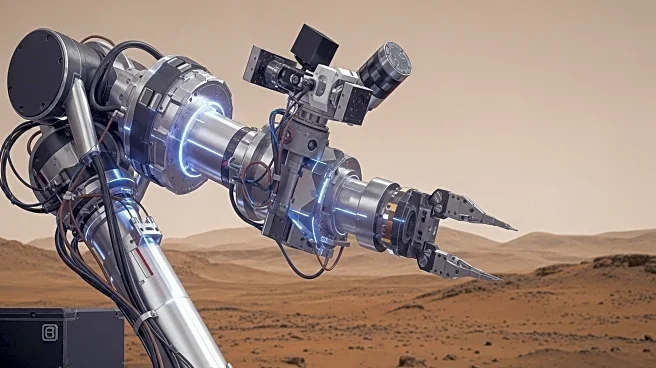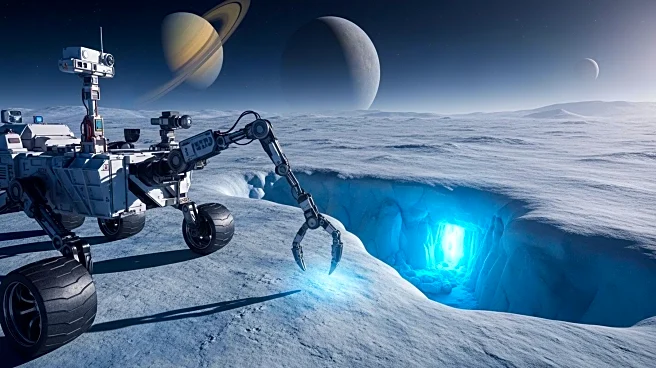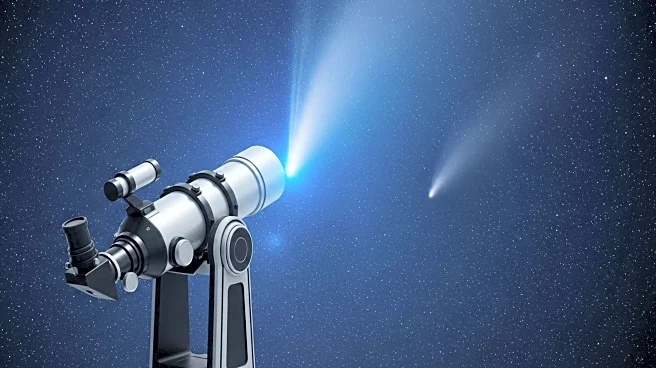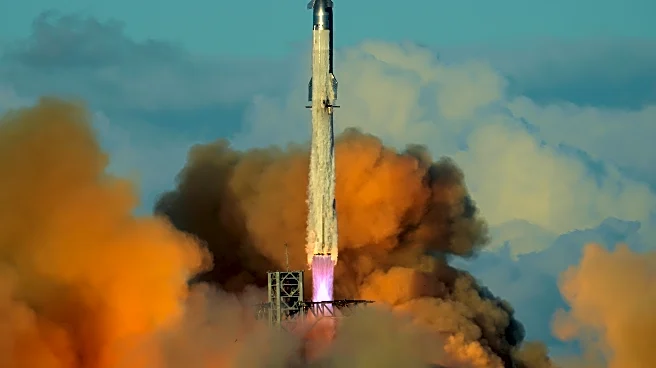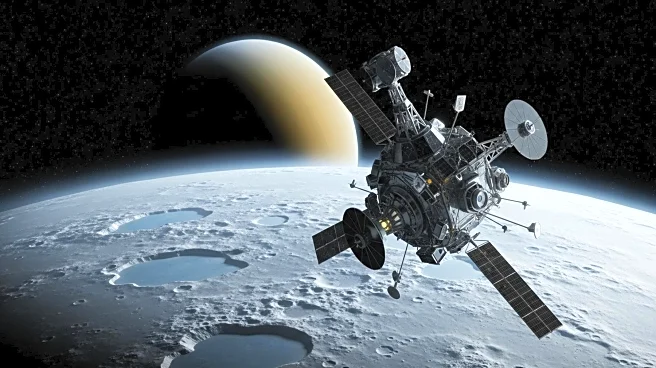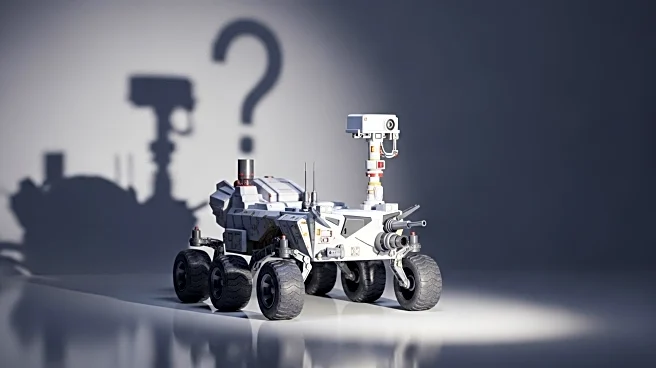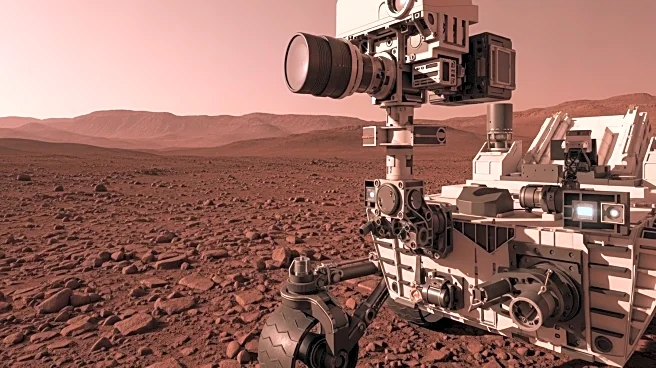What is the story about?
What's Happening?
NASA's Perseverance Mars rover, equipped with the SHERLOC instrument, is advancing the search for signs of microbial life on Mars through high-quality imaging and spectroscopic analysis. SHERLOC, which stands for Scanning Habitable Environments with Raman and Luminescence for Organics and Chemicals, utilizes Raman spectroscopy to perform fine-scale metrological analysis and detect organic compounds. Located at the end of the rover's robotic arm, SHERLOC features an auto-focusing camera and a high-powered laser that targets geological samples on Mars. This technology allows for precise detection of minerals and organic compounds, contributing to the understanding of Mars' past habitability and potential biosignatures. During its mission, SHERLOC has analyzed various targets, identifying minerals such as silicate, olivine, phosphate, pyroxene, and sulfate, which provide insights into the planet's geological diversity and environmental conditions.
Why It's Important?
The SHERLOC instrument is crucial for astrobiological exploration, as it enhances the ability to detect and analyze organic molecules and minerals on Mars. This capability is significant for understanding the planet's history and assessing its potential to support life. The findings from SHERLOC's analyses contribute to the broader Mars Sample Return mission, which aims to bring samples back to Earth for further study. The detection of organic molecules, such as polycyclic aromatic hydrocarbons, suggests potential building blocks of life, offering valuable data for scientists studying extraterrestrial environments. The instrument's ability to map the distribution of minerals and organic compounds aids in reconstructing the chemical and environmental history of Mars, which is essential for future exploration and potential colonization efforts.
What's Next?
SHERLOC will continue to play a pivotal role in collecting samples from Martian rocks and sub-surfaces, with plans to return these samples to Earth by 2030 as part of the Mars Sample Return mission. This mission, approved by the U.S. Congress, will allow for more detailed laboratory analysis of the samples, potentially confirming the presence of organic materials and their origins. Additionally, advancements in spectroscopy techniques, such as the development of compact terahertz spectrometers, may enhance future space missions by reducing payload weight and fuel consumption. These innovations are expected to improve the efficiency and accuracy of planetary exploration, paving the way for more intelligent and miniaturized systems in the search for life on other planets.
Beyond the Headlines
The use of spectroscopy in planetary exploration not only aids in the search for life but also contributes to understanding large-scale cosmic phenomena, such as the expansion of the universe. The integration of advanced imaging technologies and spectroscopy systems is likely to reduce operational costs and improve performance, making space exploration more accessible and sustainable. As researchers continue to refine these technologies, the potential for discovering new insights into the universe and its origins grows, highlighting the importance of continued investment in space exploration and scientific research.
AI Generated Content
Do you find this article useful?
